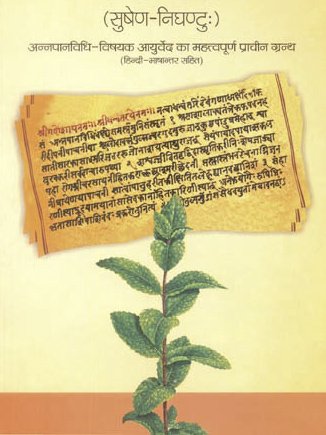Palankya, Pālaṅkyā: 8 definitions
Introduction:
Palankya means something in Hinduism, Sanskrit, biology. If you want to know the exact meaning, history, etymology or English translation of this term then check out the descriptions on this page. Add your comment or reference to a book if you want to contribute to this summary article.
In Hinduism
Ayurveda (science of life)
Source: Wisdom Library: Āyurveda and botanyPālaṅkyā (पालङ्क्या) is a Sanskrit word referring to Spinacia oleracea (spinach), from the Amaranthaceae family. Certain plant parts of Pālaṅkyā are eaten as a vegetable (śāka), according to Caraka in his Carakasaṃhitā sūtrasthāna (chapter 27), a classical Ayurvedic work. The plant is therefore part of the Śākavarga group of medicinal plants, referring to the “group of vegetables/pot-herbs”. Caraka defined such groups (vargas) based on the dietic value of the plant.

Āyurveda (आयुर्वेद, ayurveda) is a branch of Indian science dealing with medicine, herbalism, taxology, anatomy, surgery, alchemy and related topics. Traditional practice of Āyurveda in ancient India dates back to at least the first millenium BC. Literature is commonly written in Sanskrit using various poetic metres.
Biology (plants and animals)
Source: Google Books: CRC World Dictionary (Regional names)Palankya in India is the name of a plant defined with Spinacia oleracea in various botanical sources. This page contains potential references in Ayurveda, modern medicine, and other folk traditions or local practices It has the synonym Obione stocksii Wight (among others).
Example references for further research on medicinal uses or toxicity (see latin names for full list):
· Nordic Journal of Botany (1991)
· The Gardeners Dictionary (1768)
· Flora Orientalis (1879)
· Species Plantarum
· Gen. Pl. ed. 5 (1754)
· Methodus (Moench) (1794)
If you are looking for specific details regarding Palankya, for example pregnancy safety, extract dosage, diet and recipes, health benefits, side effects, chemical composition, have a look at these references.

This sections includes definitions from the five kingdoms of living things: Animals, Plants, Fungi, Protists and Monera. It will include both the official binomial nomenclature (scientific names usually in Latin) as well as regional spellings and variants.
Languages of India and abroad
Sanskrit dictionary
Source: Cologne Digital Sanskrit Dictionaries: Shabda-Sagara Sanskrit-English DictionaryPālaṅkyā (पालङ्क्या).—f.
(-ṅkā) Gum olibanum. E. pālaṅka the olibanum tree, ṣyañ added.
Source: Cologne Digital Sanskrit Dictionaries: Monier-Williams Sanskrit-English Dictionary1) Pālaṅkya (पालङ्क्य):—[from pālaṅka] nf. incense, [Suśruta]
2) [v.s. ...] Beta Bengalensis, [Bhāvaprakāśa]
Source: Cologne Digital Sanskrit Dictionaries: Yates Sanskrit-English DictionaryPālaṅkyā (पालङ्क्या):—(ṅkyā) 1. f. Gum olibanum.
Source: DDSA: Paia-sadda-mahannavo; a comprehensive Prakrit Hindi dictionary (S)Pālaṅkya (पालङ्क्य) in the Sanskrit language is related to the Prakrit words: Pālaṃka, Pālaṃgā.
[Sanskrit to German]
Sanskrit, also spelled संस्कृतम् (saṃskṛtam), is an ancient language of India commonly seen as the grandmother of the Indo-European language family (even English!). Closely allied with Prakrit and Pali, Sanskrit is more exhaustive in both grammar and terms and has the most extensive collection of literature in the world, greatly surpassing its sister-languages Greek and Latin.
See also (Relevant definitions)
Full-text: Palanka, Palakya, Gramyavallabha, Palanga, Ciritacchada, Palinda, Kshurika, Gramina, Shakavarga.
Relevant text
Search found 2 books and stories containing Palankya, Pālaṅkyā, Pālaṅkya, Palaṅkyā; (plurals include: Palankyas, Pālaṅkyās, Pālaṅkyas, Palaṅkyās). You can also click to the full overview containing English textual excerpts. Below are direct links for the most relevant articles:
The Garuda Purana (by Manmatha Nath Dutt)
Chapter CXCII - Medicinal recipes of inffalible effcacies < [Dhanvantari Samhita]
Sushruta Samhita, volume 1: Sutrasthana (by Kaviraj Kunja Lal Bhishagratna)